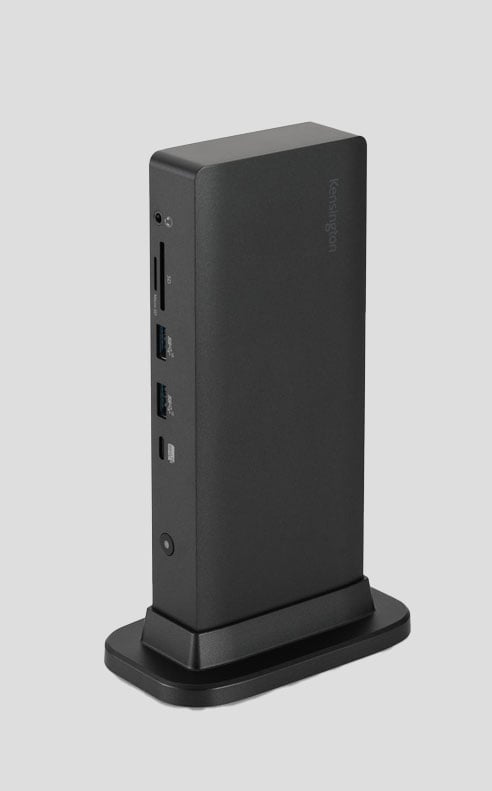
Muscle pain is often caused by unnecessary strain on your bones, joints, and other areas of your body. The good news? There are several desk exercises that you can do to help prevent this.
NASA even publishes a guide of exercises that they recommend their employees engage in throughout the day. It mentions nine ways excessive and improper sitting can harm someone, which can affect a wide range of body parts from head to toe, including:
- Neck
- Heart
- Back
- Feet
If you're seeking better health and wellness while at work, these easy desk exercises will keep your muscles from getting stiff or sore and help you avoid common workplace injuries.
How to prevent muscle pain while at work?
Repetitive strain injuries (RSIs) are injuries you sustain by engaging in movements repeatedly that place unnecessary strain on your body. The most common are tendonitis and bursitis - injuries to the tendons and bursae in your joints.
Experts recommend specific stretches and exercises to help prevent these common workplace injuries. They have been broken down into three categories:
- Wrist stretches
- Neck and back stretches
- Leg stretches
These three stretches are key for preventing or avoiding common work injuries but are not a replacement for medical intervention. The helpful professionals at Kensington cannot prescribe stretches for a specific injury, and these are just general stretches for your well-being. Hold all stretches for ~30+ seconds and repeat as desired. Never stretch to the point of pain.
Wrist Stretches
These wrist stretches will help you be proactive against RSIs. They will also help you avoid straining injuries like carpal tunnel syndrome and tendinopathy.
Wrist Extensor Stretch
There are many benefits of doing regular wrist stretches, whether you are experiencing wrist pain or are being proactive. You increase range of motion and decrease stiffness. You also increase circulation to promote healing and improve muscle balance for better wrist and hand function.
Start with your palm facing down:
- Bend your wrist, so fingers point downward
- Use the other hand to increase the stretch gently
- Repeat on the other side
Wrist Flexor Stretch
The benefits of doing wrist flexor stretches are the same as those of doing a wrist extensor stretch. Health and wellness professionals recommend doing them in conjunction with one another.
Again, start with your palm facing down:
- Bend your wrist, so your fingers point upward
- Use the other hand to increase the stretch gently
- Repeat on the opposite side
Carpal Tunnel Stretch
Another stretch that will keep your wrists strong and flexible is the simple yet effective carpal tunnel stretch.
Begin with your palm facing up:
- Pull your fingers so they are pointed downward
- Using the opposite hand, extend each finger (one at a time), so you feel the stretch from your finger through your forearm
- Repeat on the opposite side
Neck and Back Stretches
The following neck and back stretches, proper posture, and body mechanics can help avoid RSIs and promote spinal alignment. There are four stretches in this category you can do daily.
Lateral Neck Stretch
This stretch helps relieve strain and allows the ligaments in your neck to become more flexible. Sitting in the same position without moving your neck for hours can lead to pain that radiates through your neck, your shoulders and even shoots down your spine.
- First, sit up in your chair, maintaining proper posture
- Tilt your head, so your ear moves gently toward your shoulder until a stretch is felt in the lateral neck
- Repeat on the other side
Lateral Side Bend
This lateral exercise helps improve lumbopelvic stability. It activates and releases the muscles responsible for spinal movement and enables you to avoid back problems. It also helps to stretch many of your core muscles.
When sitting up in your chair using proper posture or standing next to your desk:
- Interlock your hands with your arms overhead
- Gently bend the torso laterally to either side
- Repeat on the other side
Chest Stretch
This stretch helps you open your chest muscles and loosens your bicep muscles. It also strengthens the muscles in your shoulders and increases flexibility.
Standing in the doorway:
- Use the doorframe to prop your bent arm approximately at shoulder level
- Gently lean your upper body forward
- Repeat on the other side
“T” Stretch
Also known as a tricep stretch, this stretch improves flexibility and helps you avoid pain. It also slightly lengthens muscles and increases your range of motion.
While either sitting or standing:
- Raise both arms away from your sides at approximately shoulder height
- Squeeze and hold shoulder blades together
- Repeat as desired
Leg Stretches
Leg stretches help promote circulation and avoid common workplace injuries. These stretches usually include:
Hamstring Stretch
Personal trainers recommend hamstring stretches as part of your exercise routine. They are also excellent when working long days sitting in the office.
From a standing position:
- Prop one leg on a piece of furniture or step
- Gently lean forward while keeping your leg straight
- Repeat on the other side
Seated Hip Stretch
Sitting for long periods causes hip flexors to tighten. This stretch causes the muscles of your hips to loosen.
While seated:
- Cross one ankle over the opposite knee
- Use hand to push down on the top (bent) knee gently
- Repeat on the other side
Calf Stretch
You can reduce knee pain and improve flexibility by doing a calf stretch. It also helps stretch the larger muscles of your legs.
From a standing position:
- Prop toes of one foot on a small object
- Carefully step forward with the opposite foot
- Repeat on the other side
Kensington’s Stretch Guide Can Help You Avoid Common Work Injuries
Hold all stretches for 30+ seconds and repeat as desired. Never stretch to the point of pain, as doing so may lead to further pain and injury. If you’re looking for even more desk exercises that can help you avoid injuries or muscle pain/strains, then check out the Kensington Stretch Guide.
At Kensington, we understand the importance of health and wellness. We have a long line of ergonomic products centered around your wellbeing. You can also check out our resource tab to find ways to set up your workstation for ergonomic comfort.
Contact us today, and we can tell you more about our health, wellness, and ergonomics products.
